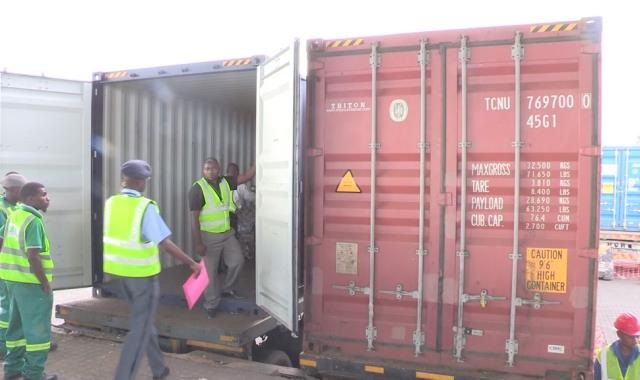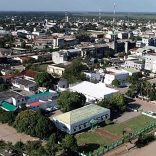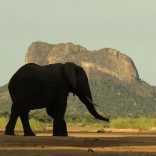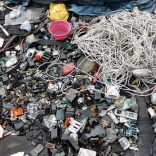Mozambique: 15 killed by wild animals in Mágoè National Park
Massive haul of ivory in Maputo port – AIM report

Photo: Lusa
The Mozambican Tax Authority (AT) on Thursday announced the largest seizure of ivory in Mozambican history.
The ivory was found in a container in the Port of Maputo, destined for Cambodia. When journalists visited the port, the ivory had not yet been weighed, but initial estimates were that the container held between one and one and a half tonnes of elephant tusks.
The price of raw ivory in the main market, China, fell sharply in 2017, as the Chinese authorities prepared to ban the trade in ivory. A kilo of ivory that had sold for 2,100 US dollars would only fetch 730 dollars by mid-2017. Even so, this still means that large consignments of ivory can fetch huge sums – the ivory seized in Maputo port would sell for at least 730,000 dollars.
Speaking to reporters in the port, the AT press officer, Fernando Tinga, said the container belongs to a factory located in Beluluane, on the outskirts of Maputo, which specialists in the production of plastic articles. He declined to name the company, or reveal whether it is owned by Mozambican or foreign citizens.
He said the ivory was discovered during a “routine inspection” by scanner of the containers from the Beluluane company. There were six containers, and the export documents said they contained polypropylene resin, which is used to make a wide range of plastic products.
But inspection of the containers revealed no resin at all. Instead there were large quantities of used plastic items, apparently being sent for recycling. “We’re talking about plastic bottles of mineral water or soft drinks, already used, and we didn’t find any of the resin mentioned on the export documents”, said Tinga.
And in one of the six containers, the ivory was found, hidden among the used plastic items. All export of ivory, raw or worked, is banned under Mozambican legislation, and the AT decided to seize all six containers.
The number of tusks has not yet been counted, so it is not known how many elephants were killed to produce this haul of ivory. Nor is it known where the tusks came from, or when the animals were killed.
Tinga said the AT will now contact the Ministry of Land, Environment and Rural Development, which deals with wildlife conservation, and will open criminal proceedings at the Customs Tribunal. Nobody has yet been arrested, but the company that owns the container has been notified.
“Right now we are continuing the investigations”, said Tinga, “because it may be that behind this there are other elements we have yet to discover to reach definitive conclusion about where the ivory came from, its true destination and who is involved”.
Asked why traffickers in ivory would be foolish enough to use a port where electronic scanners are in use. Tinga said that, given the huge volume of cargo in Maputo port “it may sometimes be possible to deceive the customs authorities”.
In fact, as Mozambican private businesses have repeatedly complained, although all users of the port must pay to have their cargo scanned, only a selection of containers are actually scanned.












Leave a Reply
Be the First to Comment!
You must be logged in to post a comment.
You must be logged in to post a comment.